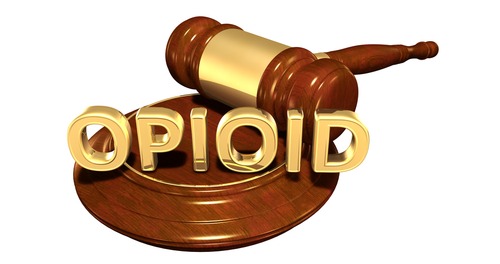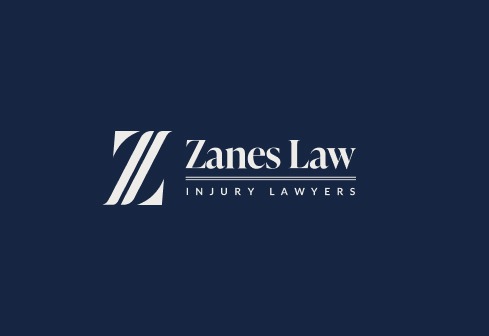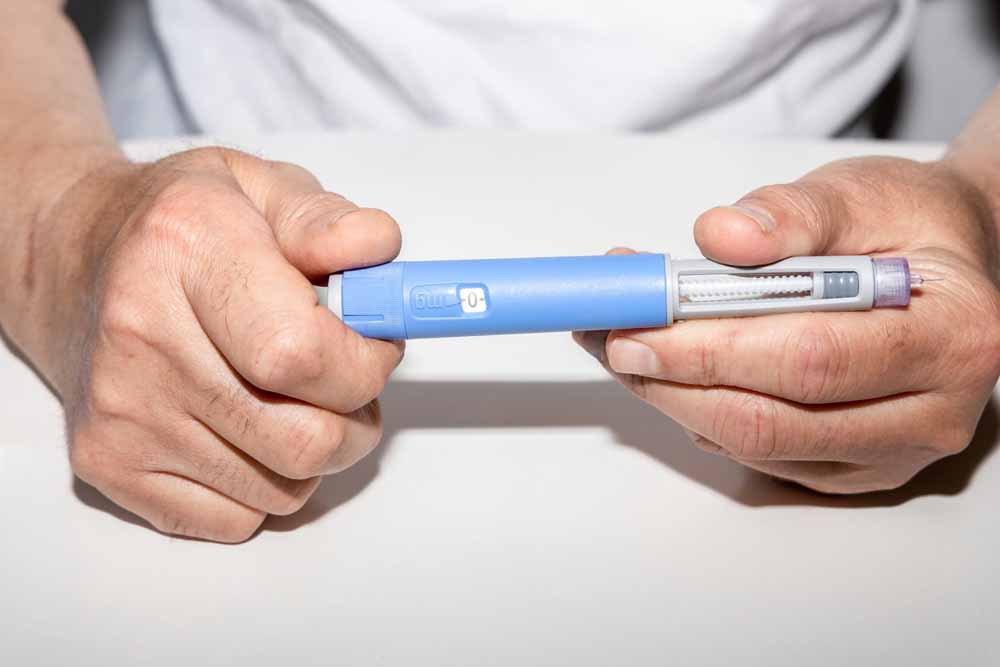The opioid crisis is in the news again after the state of Oklahoma—the first claimant to take legal aim at a pharma company for its role in the crisis—won its case against opioid manufacturer Johnson & Johnson.
On August 26, 2019, an Oklahoma judge ruled that Johnson & Johnson had violated the state’s “public nuisance” law by unrolling “false, misleading, and dangerous marketing campaigns” resulting in “exponentially increasing rates of addiction, overdose deaths,” and opioid-addicted babies. According to the New York Times, the judge ordered the corporate giant to pay $572 million to the state of Oklahoma in restitution for damages resulting from the overwhelming opioid epidemic there.
This case and its ruling are significant on many levels. For starters, the Oklahoma case is the first such case filed against a drug manufacturer in connection with the nation’s opioid crisis. Furthermore, the judge ruled in favor of the plaintiff. This decision, along with the amount awarded to the state, will brighten the prospects for plaintiffs in future litigation against Johnson & Johnson and other pharmaceutical companies who have in some fashion facilitated the country’s opioid addiction problems.
How the Oklahoma vs. Johnson & Johnson Decision Will Impact Future Cases
In the short-term, the judgment in the Oklahoma case will persuade other drug companies to settle any pending claims against them in similar cases. Other companies will take into account the fact that Johnson & Johnson is considered one of the most aggressive pharmaceutical companies when it comes to litigation. If they were unable to successfully defend this claim, it should influence other market players to reconsider their own approaches to this type of litigation.
How the Oklahoma Decision Will Affect Current Multidistrict Litigation in Ohio
With the game-changing role that the “public nuisance” issue played in the Oklahoma judgment; the decision will not affect the current opioid multidistrict litigation (MDL) in Ohio. In December 2017, hundreds of federal lawsuits filed by local governments against members of the opioid industry were centralized in the United States District Court Northern District of Ohio.
The Oklahoma decision was a very narrow decision based on Oklahoma’s public nuisance law, and this law will not apply to the Ohio MDL. Still, the Oklahoma vs. Johnson & Johnson ruling does offer plenty of hope and recourse for people who have been harmed by opiate painkillers.
The current claims brought by the plaintiffs in the Ohio MDL argue that the companies conspired, committed fraud, were negligent, and violated public nuisance laws (similar to the Oklahoma case). As of this writing, most of the plaintiffs in the MDL are government entities and not individuals. However, this base is certain to change as we move forward. Anyone who has been injured physically or emotionally by opioids should hire an attorney and pursue their claim.
Likely Beneficiaries from the Oklahoma vs. Johnson & Johnson Opioid Ruling
This ruling will likely have a cumulative effect on other cases. Most immediately, the states that have filed suits against opioid manufacturers, distributors, and/or retailers will benefit. However, I think we will eventually see a significant resolution put in place to compensate individual victims who have been harmed by opiate use.
I base this assumption on the fact that current litigation has been challenging for the pharmaceutical companies, and much of the information that has surfaced throughout this process has damaged their legal positions. As the legal process discloses more information about the harmful effects of opioids and what the pharmaceutical companies knew before and throughout the developing crisis, it will become more and more advantageous for these companies to find resolutions that allow them to move forward.
The biggest area of liability, I believe, will revolve around the marketing and sales strategies employed by the pharmaceutical industry and what, if anything, the industry did to prevent opioids from being illegally diverted. The Oklahoma judge called out Johnson & Johnson’s hyper-aggressive marketing tactics, which included training sales reps to stay away from any mention of the “addiction ditch” in their efforts to motivate medical doctors to prescribe opioids for their patients.
At the same time that the Oklahoma vs. Johnson & Johnson judgment was handed down, the Kentucky Supreme Court denied a request from Purdue Pharma to reconsider lower courts’ decisions to release the company’s OxyContin marketing strategies, STAT reports. Purdue’s marketing tactics have been shrouded in secrecy for years, and the release of this documentation might spawn a surge in interest in these types of claims.
The Novelty of the Issues Being Debated in This and Other Opioid Cases
Both the Oklahoma case and the MDL involve novel legal issues, albeit different in each case. Oklahoma’s litigation was based on the state’s public nuisance law, which is complicated and not necessarily easy to apply. The state was asking for $17.2 billion. If we assume, for argument’s sake, that the decision was legally correct, I believe that the judge got the verdict of $572 million correct.
That said, I also believe that this ruling may have stretched the law, and it may be overturned on appeal. But again, this ruling in Oklahoma is an isolated case and with a completely different legal theory than those involved with the federal MDL in Ohio.
The Impact of Opioid Lawsuits on Johnson & Johnson
In the long term, I believe that Johnson & Johnson and the other pharmaceutical companies involved in the marketing, sales, and distribution of opioid pain killers will all find successful resolutions to these claims and will move forward in a successful manner.
The opioid epidemic will simply be another example of large manufacturers—in this case, the pharmaceutical industry—creating a dangerous product, hiding the fact that it is dangerous, exploiting that product for profit, and then moving in a new direction after the legal system steps in to stop them.
Judgments like those in Oklahoma vs Johnson & Johnson will help enact a needed change in how these drugs are marketed, distributed, and prescribed, but I do not believe that this litigation will put most of these companies out of business.
Consumers Will Benefit, But Not in the Way You Might Think
The judgment in the Johnson & Johnson v. Oklahoma case is probably already trickling down to consumers and benefiting them. If doctors are less likely to prescribe opioids when not medically necessary, then the consumer/patient benefits. But that’s the key: “when not medically necessary.”
A potential downside to the legal flow of the opioid panic is the chance of a swing in the opposite direction, with the medical profession and pharmaceutical industry reacting in a way that prevents patients from receiving this type of pain medication when it actually is appropriate and needed.
Furthermore—and some may call me a cynic for this—but I don’t think there is a high likelihood that settlement monies flowing from the pharmaceutical companies into states will do so in a way that benefits individuals. I believe that the only way that opioid-harmed individuals will benefit is by hiring a lawyer and individually pursuing a claim.
And still, I maintain that a tremendous benefit to this litigation happening at all is that individuals may now be more aware of the dangers of opioids—an awareness that may lead to fewer people becoming plaintiffs in this type of lawsuit. Never having a personal injury claim to file is the best thing that can happen to anyone.
*************************************************************************************************
Zanes Law is actively taking cases that involve either individuals harmed by opioids or their families, in the case of someone who has died due to an opioid overdose. If you have suffered in this manner, call Zanes Law today for a consultation: (866) 499-8989.
UPDATE: PURDUE PHARMA FILES FOR BANKRUPTCY
On September 15, 2019, Purdue Pharma filed for bankruptcy. The action came as part of a bundled settlement with state and local governments. Because the company, its owners, and the states could not agree on a settlement, I believe this was the natural progression of the settlement discussions that had been ongoing.
Purdue is slightly different than most of the other major pharmaceutical companies in that it is not a publicly owned company like Johnson & Johnson, but rather is privately owned by the Sackler family. This element of ownership created a different dynamic in the settlement negotiations.
The states wanted the Sackler family to personally contribute billions of dollars to the settlement fund, a term to which the family agreed. In addition, the Sackler family had agreed to give up ownership of Purdue Pharma as part of the settlement agreement, but they still would have enjoyed a multi-billion-dollar net worth. This outcome was not an acceptable resolution to a number of the states, so Purdue Pharma chose to file bankruptcy, rather than participate in protracted litigation. I think that this bankruptcy filing will lead to a good resolution for the states in a much shorter time frame than a long, drawn-out litigation ever would have.
A lot has been said about the Sackler family moving money out of the country, but I believe a bankruptcy court is actually a much better venue and in a much better position than a trial court to address this allegation and whether or not the Sackler family has any personal liability. The bankruptcy judge has the authority to look at all the necessary issues and will also have the authority to either approve or not approve any proposed settlement.




